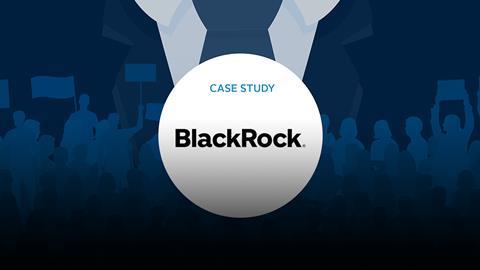BlackRock
- Signatory type: Investment manager
- Asset class: Infrastructure
- Operating region: Global
BlackRock’s US$60 billion real assets team, which manages the firm’s real estate and infrastructure investments, helps clients meet their investment goals by providing a range of well-defined, outcome-orientated strategies along the investment risk-return spectrum, covering equity, debt and listed real assets globally.
Why we carry out active engagement in our infrastructure investments
As long-term investors, we believe that an integrated approach to sustainable investing is essential to maintaining and enhancing the value of our assets and businesses throughout their investment lifecycle, and we are committed to managing environmental, social and governance impacts in a responsible manner. This includes a focused approach on human rights, including active engagement with the communities in which we own and operate assets.
It is our conviction that our clients, as long-term shareholders, benefit when companies operate their businesses responsibly. Unmanaged potential or actual adverse human rights issues can not only harm the people directly affected but also expose companies to significant legal, regulatory, operational, and reputational risks.
How we carry out active engagement in our infrastructure investments
As investors in long-term, physical infrastructure, we believe it is critical to consider the potential impacts of our investment activities on all stakeholders. When evaluating any infrastructure investments, potential ESG risks (including human rights) and other factors that may have material consequences throughout the investment lifecycle are considered by the investment management team, together with key partners in the BlackRock Alternative Investors (BAI) Sustainable Investing team. ESG risks and opportunities are comprehensively analysed for all new acquisitions and factored into our investment decision-making and asset management strategies. Our approach includes the use of proprietary investment ESG questionnaires and other tools to guide due diligence and identify, analyse, and document material ESG factors.
Where appropriate, we will also undertake social impact assessments to identify communities, including Indigenous Peoples, within the project’s area of influence who may be impacted, as well as the potential direct and indirect economic, social, cultural (including cultural heritage) and environmental impacts on them. In these instances, we will also work with local experts who deeply understand the local communities and history, as well as experts in indigenous cultures and human rights law, to undertake such reviews.
Where possible, we will also partner with local operators and directly engage with local communities to seek to avoid, mitigate or compensate any impacts and ensure our projects are developed in accordance with the highest human rights standards, including implementation of an adequate social action plan as well as culturally pertinent grievance mechanisms.
Example: Pre-investment engagement with an indigenous community in Mexico
In La Bufa, Mexico, we pursued early engagement with a local indigenous community prior to investing in the development of a new wind farm.
La Bufa Wind Farm is a 130MW wind farm in Zacatecas, Central Mexico, owned by a fund managed by BlackRock’s Global Energy and Power Infrastructure Funds (GEPIF) team. The site comprises 65, 2MW turbines, which currently generate enough clean energy to power over 162,000 households in Mexico. Certain hills and mountains located in the municipality where the La Bufa project was developed are considered sacred by the Huichol (Wixarika), a local indigenous community, whilst the project site also runs adjacent to their sacred pilgrimage route to Wirikuta, located in the State of San Luis Potosí, which is holy in their cosmogony. The Huichol have historically carried out sacred rituals there. Pilgrimage is a key element of the Huichol oral tradition, as during this process the elders transmit their knowledge to the new generations.
Due to the uniqueness of the site, before acquiring the project, we developed a thorough social impact assessment, which included identifying potential stakeholders and evaluating potential negative, positive, and significant cultural impacts. As part of this pre-investment due diligence, we engaged early with the Huichol elders through a series of consultations, meetings, and site visits to supplement the firm’s own social impact assessment and to facilitate the intercultural dialogue required to obtain consent from the community.
Following this initial engagement, we submitted to the Mexican Ministry of Energy a formal Social Impact Assessment Study, as required by the Mexican Electricity Law and the International Labour Organization Convention 169 so that the Mexican State could issue a ruling on the need to carry out the process of the human right to free, prior and informed consultation. The Ministry of Energy engaged the Huichol Community and performed a series of meetings in the three states where the community resides: Durango, Jalisco, and Nayarit. The minutes of the meetings codified the Huichol community’s free, prior, and informed consent for the development and operation of the La Bufa Wind Farm. This was a historic moment as it was the first time such consent had been granted by this community in the history of Mexico.
Through our partnership with the Huichol community on La Bufa, we have advocated for the culturally pertinent development of infrastructure projects in Mexico, adhering to strict compliance of human rights of indigenous communities, and evidencing the benefits that respecting the human right to free, prior, and informed consultation of indigenous communities brings to project development.











